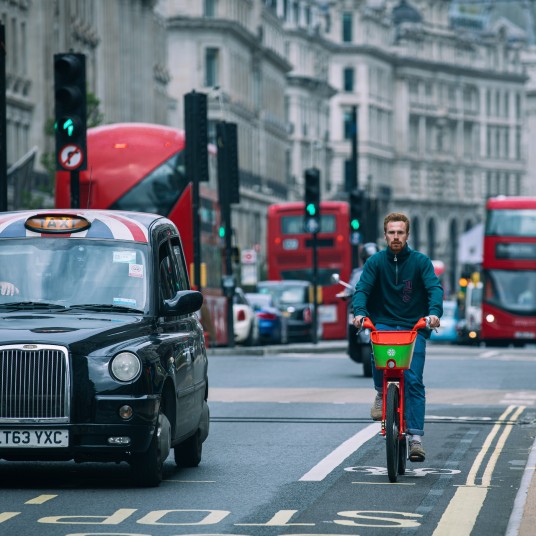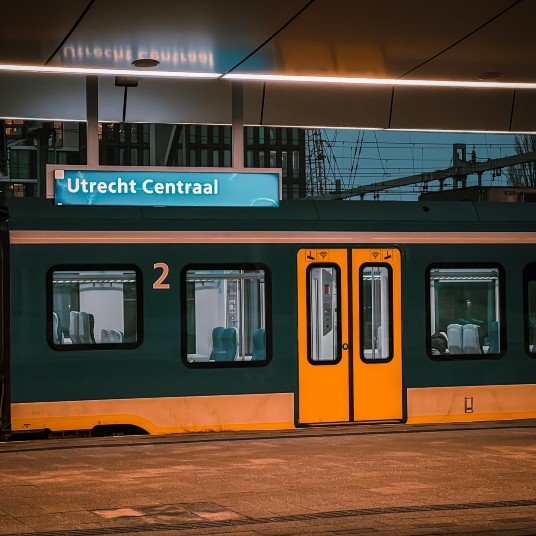Cities are constantly trying to reduce the number of cars on their roads. But not all plans achieve the same results. Which sustainable mobility measures are successful in reducing congestion on urban roads?
Sustainable mobility measures that are working around the world
Reducing urban car use is a priority for many cities, concerned about the pollution generated by said means of transportation. To improve health outcomes, meet climate goals and create more liveable cities, reducing car use must be an urgent priority.
Research conducted by Paula Kuss at the Centre for Sustainability Studies at Lund University and published in Case Studies on Transport Policy, highlights different initiatives that have proven effective in reducing urban car use.
Do you want to go to the city centre by car? You will have to pay a fee
 The most successful strategy according to the research was to impose a fee for drivers who want to access the city centre with their vehicle. This revenue is also reinvested in the municipality's sustainable transport system.
The most successful strategy according to the research was to impose a fee for drivers who want to access the city centre with their vehicle. This revenue is also reinvested in the municipality's sustainable transport system.
Citizens decide to leave the car at home and use collective transport to be able to access the center quickly and easily. And meanwhile, those who continue to move in their private vehicle will do so by contributing to the sustainable mobility of their municipality.
This is the case of London, one of the pioneers in implementing this plan. Since giving the green light to the scheme in 2003, the English capital has experienced a 33% reduction in traffic. The price has been increasing and nowadays it costs around £15 to access central London with your car.
An end to the problem of not being able to find a parking space
Finding a parking space is always a problem, especially in the centre of big cities. But what if we were to eliminate the problem at its root? Without parking spaces, there would be no cars looking for a spot.
It sounds a bit confusing, but the truth is that several cities are proving that this measure works. Places where parking space has been replaced by bicycle lanes and pavements to promote zero-emission, car-free mobility. Oslo, the capital of Norway, has managed to reduce car use in the city centre by 19% in this way.
Limited traffic areas
Another solution that has achieved remarkable results is the introduction of access timetables to the most congested areas of the city. A measure that Rome implemented to encourage the use of public transport which reduced car traffic in the Italian capital by 20 % during restricted hours and by 10 % even during non-restricted hours when all cars are allowed to circulate.
But the truth is that we cannot always leave our cars parked at home. Many cities are promoting the use of electric cars with subsidies or by increasing the number of charging points on public roads. Local councils don’t penalise this type of private mobility because it doesn’t pollute and its impact is much lighter than that of fossil fuels.
A sustainable route on the way to the office
 Encouraging the use of public transport sometimes falls short. Not everyone lives next to a metro or bus stop. When commuting to work, for example, many people have to drive their private car to the station and then use public transport.
Encouraging the use of public transport sometimes falls short. Not everyone lives next to a metro or bus stop. When commuting to work, for example, many people have to drive their private car to the station and then use public transport.
The local government of the Dutch city of Utrecht and several private companies teamed up with the aim of solving the issue. This collaboration consists of providing free public transport passes to employees, combined with a private shuttle bus to connect transit stops with workplaces. A measure that achieved a 37% reduction in the proportion of commuters travelling into the city centre by car.
What if you were paid for not parking?
Another effective way to reduce the number of people travelling by car is to introduce parking fees at the workplace. This is evidenced by the experience of a large medical centre in the Dutch city of Rotterdam, which managed to reduce its employees' car trips by 25 %.
The plan was to charge employees for parking in the office parking area. If, on the other hand, employees decided not to use the parking area, the company would pay them the cost of the parking space so that they could use the money for public transport.
Going to the office or college in a sustainable way
 Indeed, workplaces have proven to be highly influential in encouraging the substitution of the private car by sustainable mobility measures. Whether through offering bus routes to employees to get to the office, discounts for public transport or including bicycle racks on their premises, companies are successfully reducing car use.
Indeed, workplaces have proven to be highly influential in encouraging the substitution of the private car by sustainable mobility measures. Whether through offering bus routes to employees to get to the office, discounts for public transport or including bicycle racks on their premises, companies are successfully reducing car use.
A key alternative that also facilitates this situation is electric bikesharing. An increasing number of large cities have such scooters parked on their streets so that anyone can use them to move around the city in a sustainable way. They’re powered by electricity from renewable sources and allow citizens to get from one place to another quickly and safely.
A similar situation occurs in college campuses. In fact, the University of Bristol managed to reduce car use among its staff by 27% while providing them with better cycling infrastructure and discounts on public transport.
Fast Company's research also highlights the case of the Sicilian city of Catania. This municipality offered students a free public transport pass and provided them with transport links to campus. The result was a 24% decrease in the proportion of students commuting by car.
Sustainable and shared mobility, also by car
Hourly electric car rentals are becoming commonplace in large cities. In places such as Bremen (Germany) and Genoa (Italy), each shared car replaces 12-15 private vehicles on average. It’s a complementary measure to public transport or cycling that seeks to reduce the number of private vehicles on the roads or parked on the streets.
Promoting sustainable mobility through education
Beyond measures on the ground (or roads), awareness-raising strategies are also important. Two English cities, Brighton & Hove and Norwich, organised school days on sustainable mobility for students and parents. The goal of these events was to encourage participants to walk, cycle or carpool on their way to school.
Customised travel plans
What if your city made a tailor-made plan for you to move around more sustainably? Cities such as Marseille in France, Munich in Germany or San Sebastian in Spain have tested the analysis of their residents' personal mobility to try to make it more sustainable.
These programmes, which provide advice and trip planning so that city residents walk, cycle or use public transport (sometimes at a discount), achieved seemingly modest reductions of 6% to 12%. However, since these sustainable mobility measures cover all residents of a city, as opposed to smaller segments such as commuters, these approaches can still play a valuable role in reducing overall car use.
Apps for sustainable mobility
Mobile phone technology is playing an increasingly important role in strategies to reduce car use. The Italian city of Bologna, for example, developed an app for individuals and teams of employees from participating companies to track their mobility. Partakers competed to earn points for walking, cycling and using public transport, and local companies offered these app users rewards for reaching point targets.
Likewise, applications that promote the use of sustainable transport also play a fundamental role in this. We’re talking, for instance, about motosharing apps, where users can locate and temporarily rent electric scooters to move around the city.